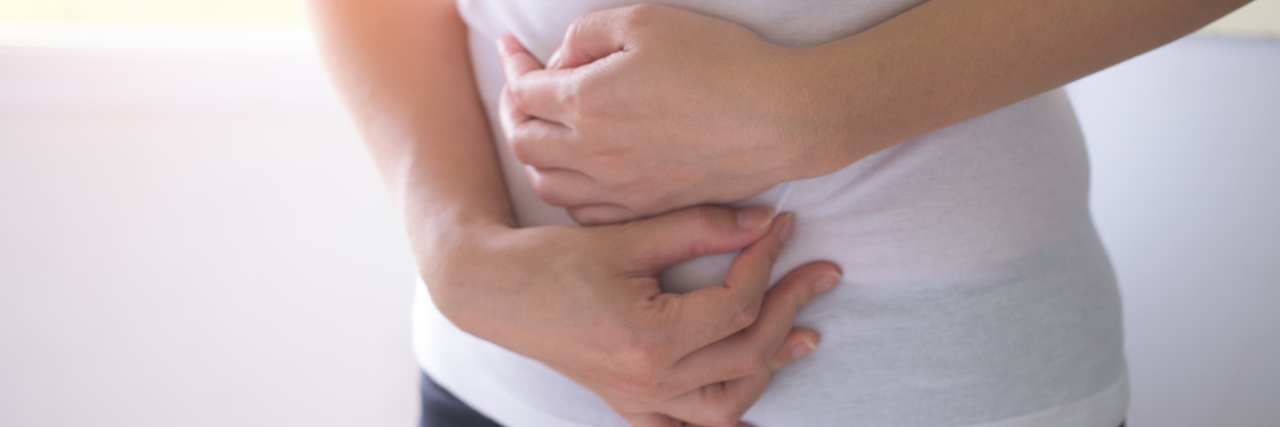What It's Like to Live With Abdominal Spasticity After a Brain Injury
Spasticity is a condition in which muscles stiffen or tighten, preventing normal fluid movement. The muscles remain contracted and resist being stretched. It is caused by a variety of factors, and is often a symptom of an illness, brain injury, or spinal cord injury. The spasticity I experience several times daily is in my abdomen and a result of an ABI from brainstem encephalitis.
In a typical day, I have eight to 10 flares of abdominal spasticity. Although I’ve grown accustomed to them, they still impact my posture, breathing, mobility, comfort, and even my mood. With each flare, the muscles in my ribs and upper abdomen begin to tighten and shorten, like I’m doing a sit-up. My diaphragm is compressed, forcing me to take shorter, shallower breaths, and the muscles eventually begin to ache from the strain. If it continues without relief, it will spread to my lower abdomen, which sometimes causes nausea and GI distress.
This is the main reason why I cannot stay standing/walking for long. The minute I stand up, the abdominal spasticity begins. The kyphoscoliosis already causes me to twist left and tip forward, and the spasticity exacerbates that. The longer I stay on my feet, the worse it gets, and the harder it is to breathe. Walking amps all of that up, because it requires more physical effort to remain balanced and stable, so I don’t tip over and fall on my face.
Any type of “noxious stimulus” causes a flare. This includes a whole variety of stimuli, including new or sudden pain, cold, physical effort, remaining in the same position for an extended time (sleep), and emotional distress. But “noxious,” in this case, does not necessarily mean bad harmful, or uncomfortable. I also get abdominal spasticity during moments that are typically pleasurable. Like scratching an itch. As you would expect, being itchy (especially in a place I can’t reach) causes spasticity. You might expect that scratching to relieve that itch would ease the spasticity, but the opposite is true. The sweet relief of scratching an annoying itch is still very pleasurable to me, but it is partnered with the discomfort of my stomach muscles clamping down violently from the stimulus. At the end of the day, when I use my scratcher to reach my itchy back and hips, I am left sweating, panting and bent over, yet satisfied.
Physical touch and sex is another area of concern. If I am touched when I am unprepared, it startles me, and that causes spasticity. Even if it’s my husband placing a gentle hand on my shoulder, or my dog pressing his soft head against my leg, it results in pleasure mixed with discomfort. Sometimes it is difficult to thoroughly enjoy a deep massage (you know, the kind that “hurts so good!”) or a spa treatment because of the inevitable spasticity that accompanies the lovely stimulus. Most distressing is when the spasticity flares during sex (solo or with a partner). The growing arousal is dampened by the growing spasticity, and though the climax (if I am able to achieve it) temporarily obliterates the discomfort, the after-glow” is punctuated with tension, stiffness and shortness of breath.
This issue is not life-threatening or damaging to my body and health, and I have learned to adapt and push through it, recognizing what causes it to flare, and developing strategies to manage it. But it can be exhausting and a strain on my mental health. Because of our body-mind connection, it is challenging to be in a relaxed mental/emotional state while my body is filled with tension and discomfort. Add in the daily chronic pain I experience, and now and again, it’s just too much to bear. Those are the days I park myself in front of the TV, put my wheelchair in tilt, turn off my phone, and hibernate till dinnertime. Sometimes the best coping strategy is none at all!
Getty image by krisanapong detraphiphat.

